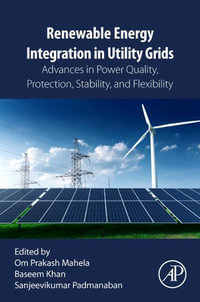| Foreword | p. v |
| Introduction: A post-Duhemian thermodynamics | p. 1 |
| Thermostatics and Thermodynamics | p. 17 |
| Thermodynamic Systems | p. 17 |
| Thermodynamic States | p. 23 |
| Thermostatics (Born--Caratheodory) | p. 24 |
| Axioms of Thermostatics | p. 24 |
| Scaling of Temperature, Carnot's Theorem | p. 31 |
| Thermodynamic Potentials | p. 34 |
| The Evolution of Real Systems; Continua | p. 36 |
| Various Thermodynamics | p. 47 |
| Preliminary Remarks | p. 47 |
| Theory of Irreversible Processes (T.I.P.) | p. 48 |
| Axiom of Local State | p. 48 |
| Application to Deformable Material Continua | p. 51 |
| The Compressible Newtonian Fluid | p. 53 |
| The Linear Viscoelastic Solid | p. 55 |
| Finite-Strain Behavior of a Solid | p. 57 |
| Rubber-Like Materials | p. 59 |
| Anisotropic Elastic Materials | p. 59 |
| Onsager--Casimir Symmetry Relations | p. 60 |
| Dissipation Potential | p. 62 |
| Rational Thermodynamics | p. 63 |
| General Features | p. 63 |
| Thermoelastic Materials | p. 65 |
| Comparison with T.I.P. | p. 71 |
| Further Improvements | p. 71 |
| Extended Thermodynamics | p. 72 |
| Thermodynamics with Internal Variables | p. 74 |
| Thermodynamics With Internal Variables | p. 77 |
| Nature and Choice of Internal Variables | p. 77 |
| Internal Variables and Functional Constitutive Equations | p. 79 |
| Non-Equilibrium and Equilibrium States | p. 80 |
| Accompanying Processes and States | p. 83 |
| Verbal Statement of the L.A.S. | p. 84 |
| Formal Statement of the L.A.S. | p. 87 |
| Applying T.I.P. to T.I.V. | p. 89 |
| Potentials of Dissipation | p. 92 |
| Internal Variables and Microstructure | p. 95 |
| Highly Heterogeneous Bodies | p. 95 |
| Internal Variables or Internal Degrees of Freedom? | p. 97 |
| Internal Variables and Phase Transitions | p. 102 |
| Comparison with Extended Thermodynamics | p. 104 |
| Applications: General Framework | p. 107 |
| Summary | p. 107 |
| Convexity of the Energy | p. 110 |
| General Properties of Dissipation Potentials | p. 113 |
| Convex Pseudo-Potential of Dissipation | p. 114 |
| Nonconvex Dissipation Potential | p. 120 |
| Reminder of Basic Equations | p. 124 |
| The Case Solids | p. 124 |
| The Case of Fluids | p. 127 |
| Viscosity in Complex Fluids | p. 129 |
| Introductory Remarks | p. 129 |
| The Notion of Simple (Non-Newtonian) Fluid | p. 131 |
| Statistical Theory of Polymeric Fluids | p. 133 |
| Molecular Models | p. 133 |
| Evolution Equation for the Conformation | p. 137 |
| Stress Tensor | p. 138 |
| Thermodynamics with Internal Variables | p. 139 |
| General View | p. 139 |
| The Internal Variable is an Anelastic Strain | p. 142 |
| The Internal Variable is a Conformation | p. 144 |
| The Internal Variable is a Vector | p. 150 |
| The Internal Variable is a Scalar | p. 152 |
| Forced Thermodynamic Systems | p. 155 |
| Diffusion and Migration | p. 156 |
| Vorticity and Conformation | p. 158 |
| Liquid Crystals | p. 160 |
| Structurally Complex Flows | p. 163 |
| Conclusions | p. 164 |
| Viscoplasticity and Plasticity | p. 167 |
| Introductory Remarks | p. 167 |
| Viscoelasticity of Solids | p. 168 |
| Plasticity and Viscoplasticity in Small Strains | p. 173 |
| Plasticity and Viscoplasticity in Finite Strains | p. 180 |
| Damage, Cyclic Plasticity and Creep | p. 183 |
| Relationship with Microscopic Theory | p. 188 |
| Remarks on Elastoplastic Composites | p. 190 |
| Remark on the Heat Equation | p. 194 |
| Thermodynamics of Fracture | p. 197 |
| Preliminary Remark | p. 197 |
| Energy Aspects of Brittle Fracture (no thermal fields) | p. 199 |
| On Account of Thermal Fields | p. 204 |
| Material Forces in Fracture | p. 208 |
| General Features | p. 208 |
| Evaluation of Elementary Dissipation | p. 210 |
| Global Balances of Momentum | p. 212 |
| Energy Argument | p. 215 |
| The Use of Generalized Functions in the Energy Equation | p. 217 |
| Remark on Cases Exhibiting Local Dissipation | p. 220 |
| Non-Equilibrium Thermodynamics of Electromagnetic Materials | p. 223 |
| General Remarks | p. 223 |
| Reminder on Electromagnetism | p. 224 |
| Thermomechanics of Electromagnetic Materials | p. 229 |
| Classical Irreversible Processes: Conduction and Relaxation | p. 236 |
| Rigid Bodies | p. 236 |
| Fluids | p. 238 |
| Deformable Solids | p. 239 |
| Thermodynamics with Internal Variables | p. 242 |
| Magnetic Solids in Small Strains | p. 242 |
| Electrically Polarized Solids in Finite Strains | p. 245 |
| Dielectric Relaxation in Ceramics | p. 247 |
| Delayed-Wave Analysis | p. 250 |
| Instantaneous Wave | p. 251 |
| Electro- and Magnetomechanical Hysteresis | p. 253 |
| Electric Bodies | p. 253 |
| Magnetic Bodies | p. 259 |
| Relation to Microscopic Descriptions | p. 262 |
| Elastic Superconductors | p. 265 |
| Solutions of Polyelectrolytes | p. 271 |
| Thermodynamical Modeling | p. 271 |
| Field Equations | p. 272 |
| Dissipative Processes | p. 275 |
| Mechano-Chemical Effect | p. 278 |
| Electrically Induced Conformational Phase Transition | p. 279 |
| Kerr Effect | p. 279 |
| Ferroelectrics and Ferromagnets | p. 280 |
| Deformable Ferromagnets | p. 281 |
| Elastic Ferroelectrics | p. 285 |
| Solutions of Magnetic Fluids | p. 286 |
| Electroelastic and Magnetoelastic Fracture | p. 288 |
| Concluding Remarks | p. 292 |
| Waves and Reaction-Diffusion Systems (RDS) | p. 295 |
| Preliminary Remarks | p. 295 |
| Simple RDS' | p. 297 |
| Models of Nerve-Pulse Dynamics: A Good Physical Example of Internal-Variable Theory | p. 301 |
| Nerve-Pulse Transmission | p. 301 |
| Thermodynamics of Nerve-Pulse Dynamics: FHN Model | p. 305 |
| Hodgkin-Huxley Model | p. 308 |
| More Complex Relaxation Equations | p. 309 |
| Some Conclusive Remarks | p. 310 |
| Coherent Phase-Transition Fronts: Another Example of Thermodynamics of Material Forces | p. 311 |
| The General Problem | p. 311 |
| Quasi-Static Progress of a Coherent Phase-Transition Front | p. 313 |
| Heat-Conducting Case | p. 317 |
| Bibliography | p. 325 |
| Subject Index | p. 359 |
| Table of Contents provided by Syndetics. All Rights Reserved. |
























